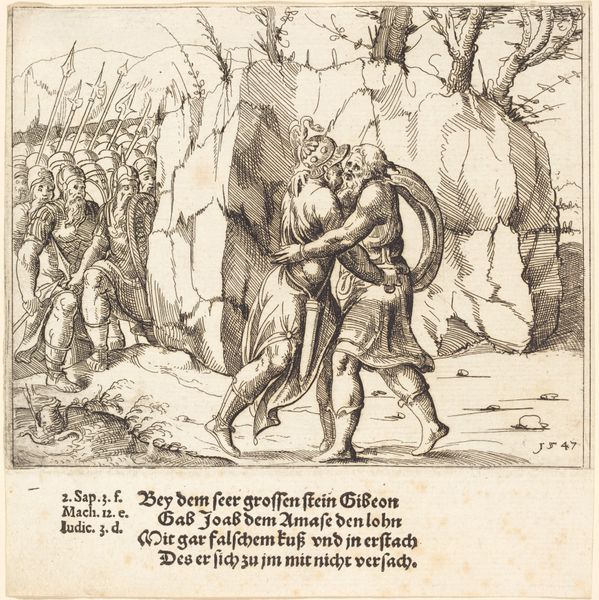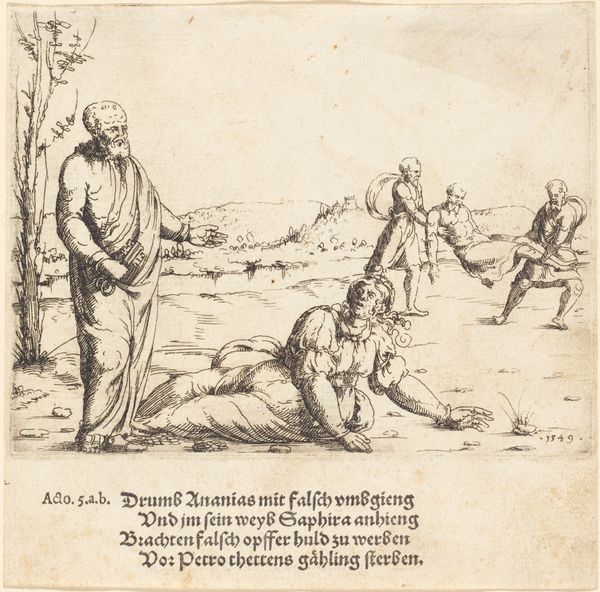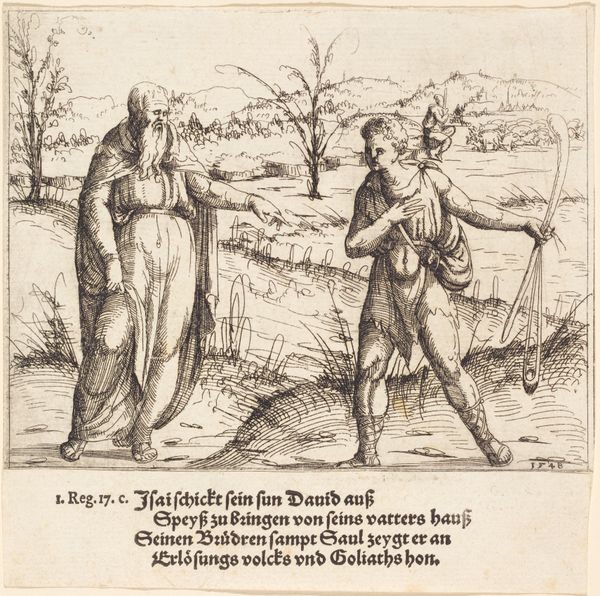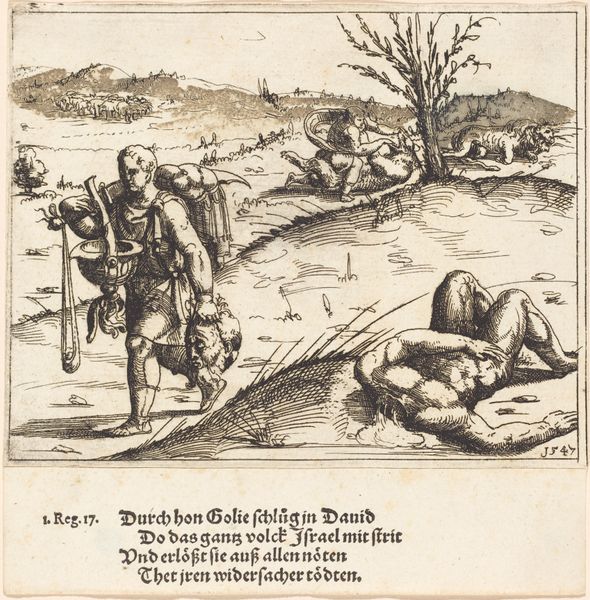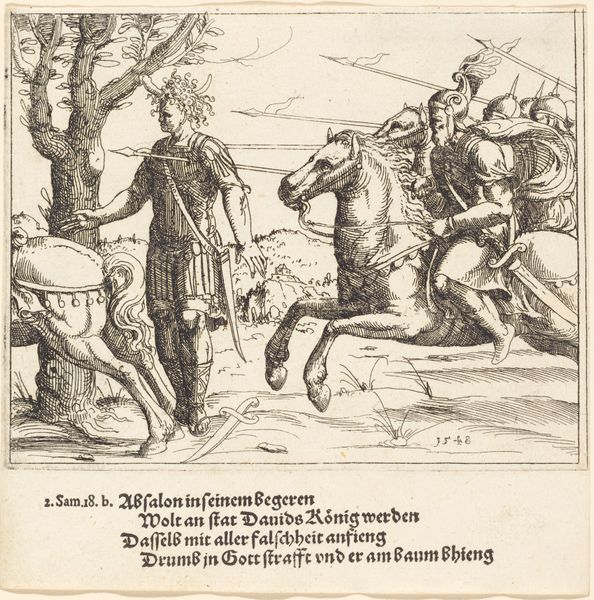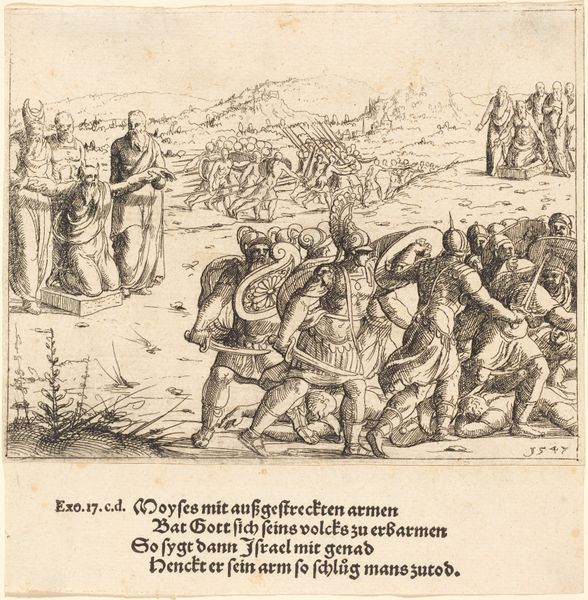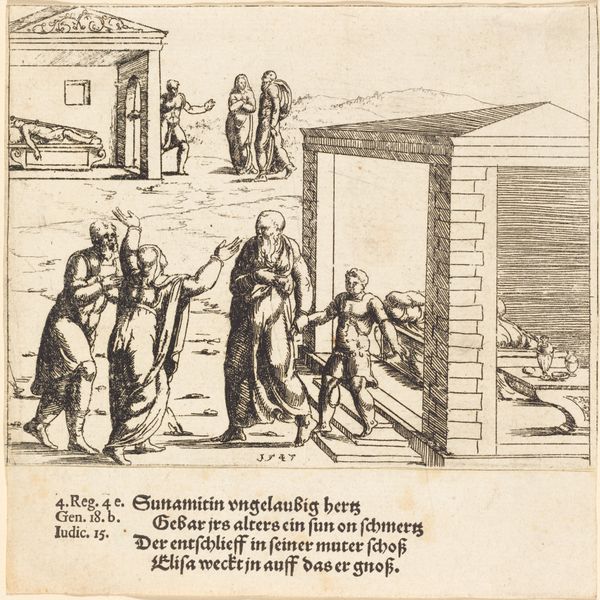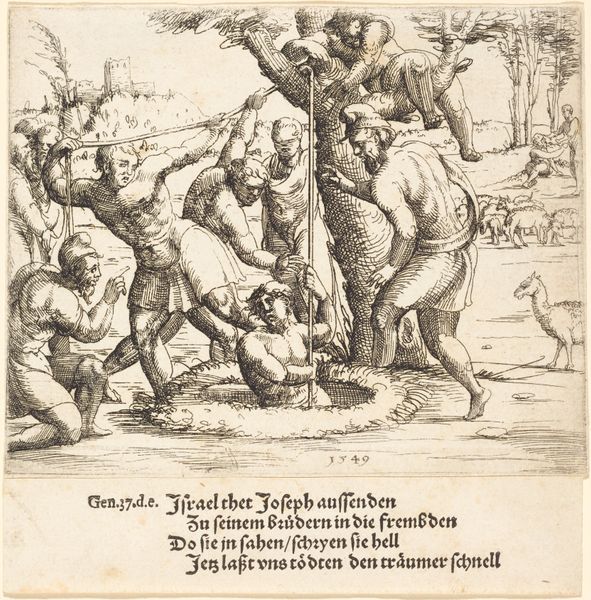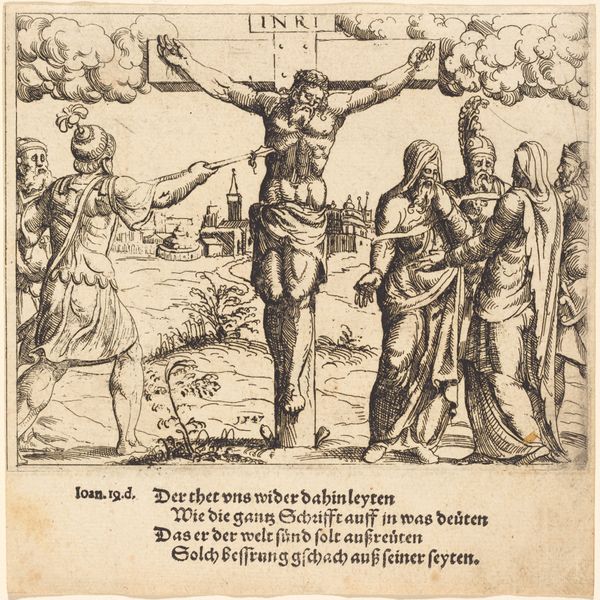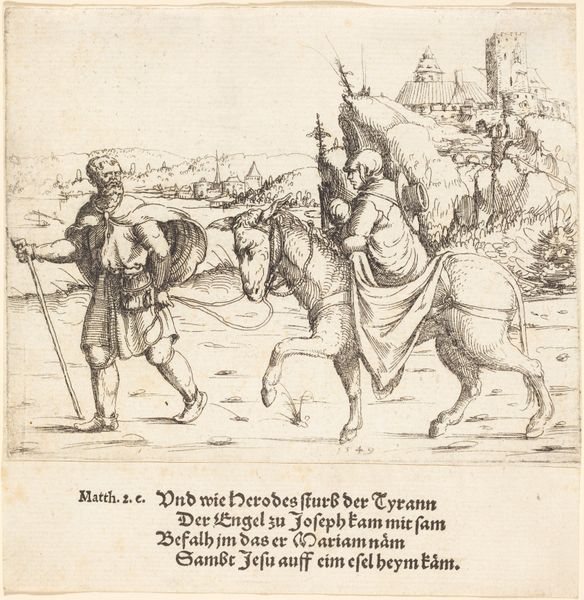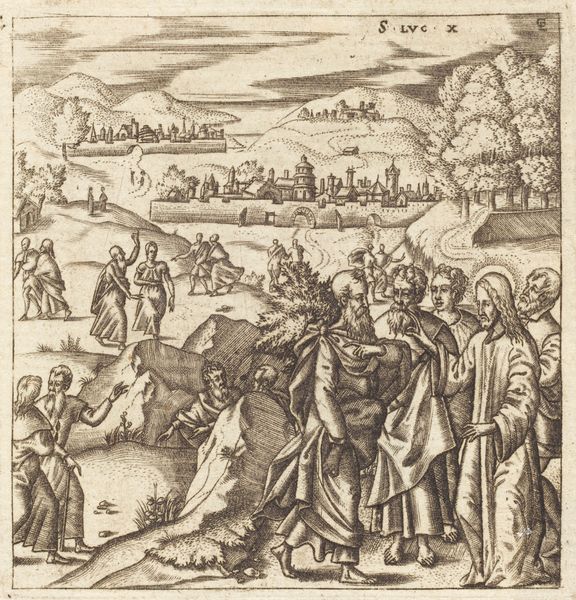
print, engraving
#
narrative-art
# print
#
landscape
#
figuration
#
line
#
history-painting
#
northern-renaissance
#
engraving
Copyright: National Gallery of Art: CC0 1.0
Curator: This engraving by Augustin Hirschvogel, titled "Elisha Punishes Gehazi with Naaman's Leprosy," dates from 1547. The crispness of line really defines the scene. Editor: Yes, that clarity is striking. The stark landscape and somewhat awkward figures contribute to a tense atmosphere, don't you think? What stands out to you in this composition? Curator: The most compelling aspect, visually, is the spatial organization. The composition unfolds through a rigorous application of line and form, directing the viewer's gaze across distinct planes within the pictorial space. Notice how the figures aren't placed using a conventional system of perspective. Editor: They’re almost stacked, aren't they? Ignoring traditional depth to tell the story, front and center. Curator: Precisely. Hirschvogel utilizes a series of formal contrasts. We see this between the stark figures and the highly linear landscape, and in the interplay of textures suggested through varying densities of line. Do you observe a hierarchy, perhaps in terms of line weight or figure placement? Editor: Elisha, in the center, is more solid, visually heavier. And Gehazi recoils, already distanced. So the relationship is presented to us primarily using representational strategies to showcase narrative over depth. Curator: That is indeed one interpretation. The scene's affect, whether of tension or something else, derives primarily from formal elements, wouldn't you agree? From a restricted tonal range and somewhat exaggerated poses. Editor: Absolutely, and considering it primarily as a statement of its time about proportion or landscape perspective gives new avenues for exploring Hirschvogel's choice in composition. Curator: Indeed. Such an exercise provides a robust engagement with the piece.
Comments
No comments
Be the first to comment and join the conversation on the ultimate creative platform.
